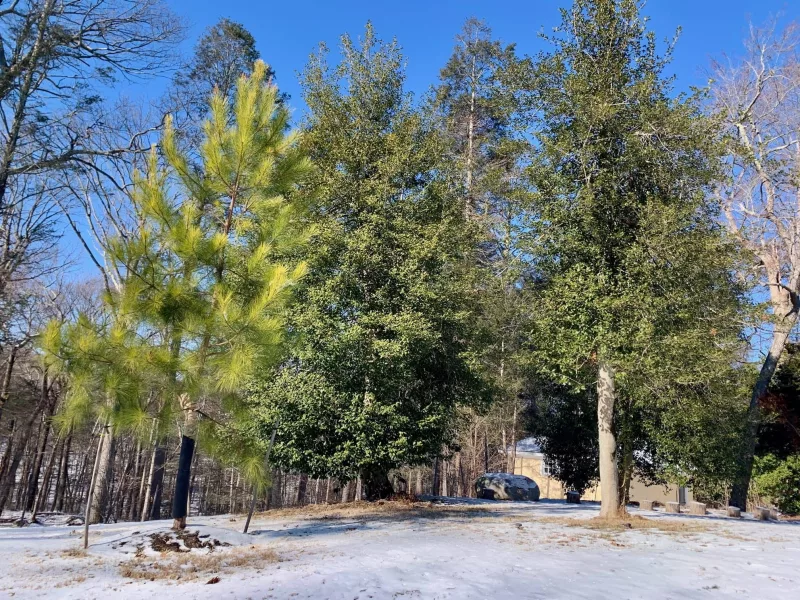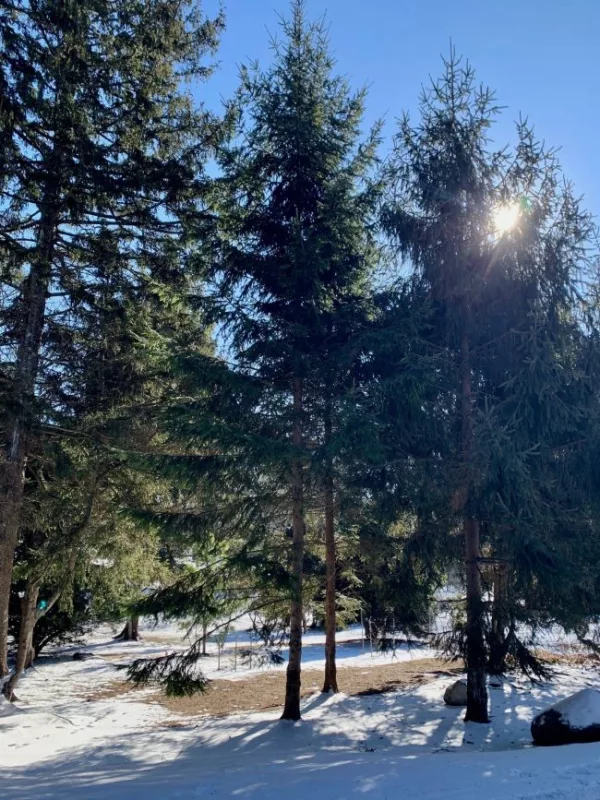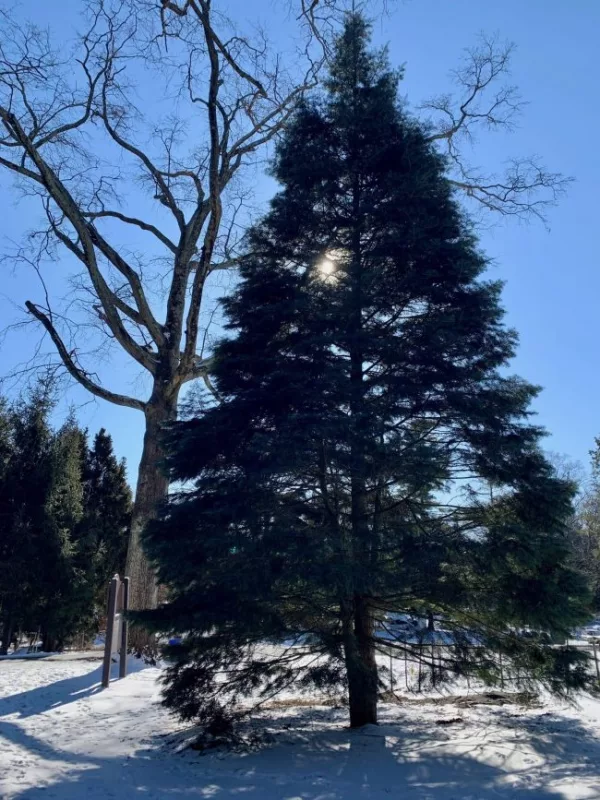
By Kate Dzikiewicz
During the winter when the skies are gray and the leaves of our deciduous trees have long since fallen, I often find myself admiring the evergreens that remain stalwart bursts of green in otherwise barren landscapes. In tropical climates, almost all trees can be considered evergreen and hold onto their leaves year-round. In the temperate climes of Connecticut however, being evergreen is a more exclusive club.
Most of our local evergreens are conifers, trees that distribute their seeds in cones such as pine, hemlock, juniper, and yew. However, not all evergreens are conifers and not all conifers are evergreen. Some conifers like the dawn redwood drop their leaves in the winter while non-conifers like holly, southern magnolia, boxwood, and mountain laurel keep their leaves all year long. If you examine the leaves of some of these different evergreen species you may notice certain similarities. Their leaves are often thicker than those of deciduous trees and may have a waxy exterior or leathery texture. These are adaptations that help the leaves be study enough to last for several years, as well as reducing moisture loss and improving their ability to withstand harsh winter conditions.
Evergreens are very popular in landscaping and can provide year-round beauty, interest, and screening from neighbors or busy roads. Arbor vitae, also known as thuja or northern white-cedar, is by far the most ubiquitous of these landscaping evergreens. Arbor vitae is native to some parts of Connecticut, but its frequent use in landscaping begs the question of whether we are missing out on other amazing evergreens in our unrelenting reliance on one.
There are many holly species that are native to Connecticut. They not only keep their leaves year-round, but their attractive red berries provide vital nourishment to local birds throughout the winter. In the spring, their small flowers but are favorite foods of native pollinators.
Mountain laurels also keep their leaves throughout winter. Their abundant pink, red, and white blossoms erupt during spring and can last for two weeks or longer. These hardy natives thrive in moderate to deep shade and are an excellent planting choice in yards that already enjoy mature trees but could use an added boost of color in the understory.
There are numerous other architecturally interesting conifers that people might consider adding to their yards. In our Connecticut forests, the two most common evergreen trees are eastern hemlock and eastern white pine. Unfortunately, hemlocks have been suffering from hemlock woolly adelgid infestation and should only be planted with great caution for this reason. However, eastern white pine are fast-growing, hardy, and attractive choices for year-round cover. Eastern red cedar is likewise a beautiful tree with many interesting varietals that range from towering to short and compact. With copious other species of evergreen from across the world to choose from, there is bound to be one that is appropriate for even the most cramped or complicated space in your yard or property.
Whether you’re enjoying strolling through a white pine forest or selecting the best type of tree to give you year-round privacy in your yard and home, evergreens can help dispel the winter gloom and keep your life greener all year round.
To find out more about the Greenwich Tree Conservancy, visit us at: www.greenwichtreeconservancy.org.
Kate Dzikiewicz
Executive Director, Greenwich Tree Conservancy







